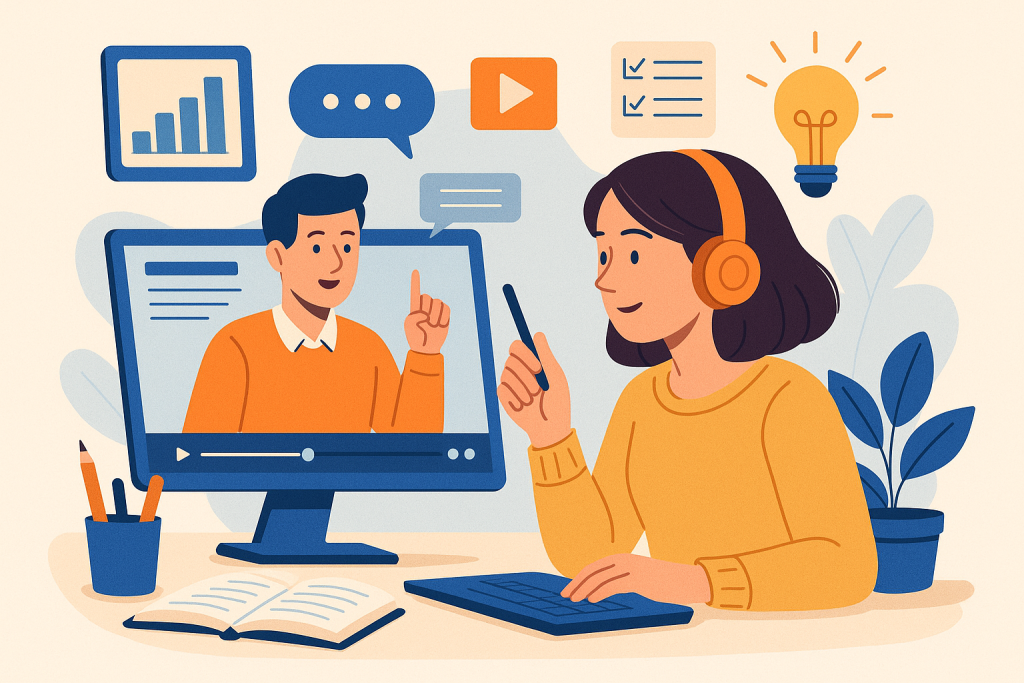Education is undergoing a digital revolution. Classrooms today look nothing like they did a decade ago. With the integration of advanced technology, schools and institutions are no longer limited by geography, time constraints, or rigid learning models. The shift isn’t just about putting laptops in classrooms; it’s about fundamentally rethinking how we teach and learn. In this article, we’ll examine how digital tools are improving learning experiences and why this trend isn’t slowing down anytime soon.

The Rise of EdTech: More Than Just Zoom Calls
Post-pandemic, many people associate online learning with video conferencing platforms like Zoom and Google Meet. But the digital learning space is so much broader. From gamified apps and AI-driven tutors to personalized dashboards and learning management systems (LMS), the range of tools available today is massive.
A 2024 report by HolonIQ predicts that global EdTech investment will reach 500 billion by 2030, up from 227 billion in 2020. That’s a strong signal that educational technology is not a passing trend.
How Digital Tools Are Improving Learning Experiences
Digital tools improving learning experiences isn’t just a marketing tagline. There’s real impact happening in the classroom and beyond. Here are some of the most significant changes:
1. Personalized Learning at Scale
One of the most significant improvements digital tools bring to education is personalization. Traditional teaching models treat all students the same, but platforms like Khan Academy, Duolingo, and DreamBox use algorithms to adapt content based on user performance.
- Students move at their own pace.
- Struggling learners get more support.
- Advanced students are challenged appropriately.
According to a 2023 study published in Computers & Education, adaptive learning systems can improve student outcomes by up to 30% compared to non-digital instruction.
2. Real-Time Feedback and Assessment
Gone are the days of waiting two weeks for test results. Tools like Google Classroom, Quizizz, and Edpuzzle offer immediate feedback that helps both students and educators understand what’s working and what needs more attention.
Benefits include:
- Faster course corrections
- Increased student engagement
- Data-driven teaching strategies
This feedback loop transforms the role of the teacher from a grader to a mentor and coach.
3. Gamification and Engagement
Let’s be real: learning algebra from a textbook isn’t exactly thrilling. Gamified platforms like Kahoot!, Classcraft, and Prodigy add points, levels, and competitions to make learning fun.
This isn’t just gimmicky. A paper from the International Journal of Educational Technology (2022) found that gamification can increase student motivation by 48%.
4. Greater Accessibility and Inclusion
Digital tools also make learning more accessible:
- Screen readers for visually impaired students
- Subtitles and transcripts for those who are hard of hearing
- Translation tools for ESL learners
Tools like Microsoft Immersive Reader and Google Translate embedded in classrooms help eliminate language and ability barriers.
For example, VoiceThread allows students to record oral presentations with closed captions, making speaking assignments more inclusive.
5. Enhanced Collaboration Across Borders
Collaboration isn’t limited to the same room anymore. Tools like Padlet, Trello, Notion, and Google Workspace enable group projects across cities or even countries.
Features like shared documents, live comments, and version history mean:
- Everyone stays on the same page
- Students learn digital communication skills
- Projects reflect real-world workflows
This kind of collaborative learning prepares students for the hybrid work environments they’ll eventually enter.
6. Data-Driven Insights for Educators
Teachers are now able to track:
- Time spent on each assignment
- Areas of confusion
- Individual progress over time
Platforms like Edmodo and Canvas offer dashboards that visualize student performance in real-time. This helps teachers:
- Identify at-risk students early
- Refine lesson plans
- Share meaningful updates with parents
Practical Tips for Implementing Digital Tools
If you’re an educator or school admin wondering how to implement these tools without getting overwhelmed, here’s a mini guide:
- Start with a clear goal – Don’t adopt tech just because it’s trendy. Decide what issue you want to solve first.
- Choose tools that align with curriculum – Evaluate how a tool complements what you’re already teaching.
- Train your staff – The most sophisticated tool is useless if nobody knows how to use it.
- Test and get feedback – Pilot programs with small groups before full deployment.
- Monitor usage and results – Use built-in analytics to assess impact and iterate.
The Challenges Still Exist
No tech solution is a magic wand. Common hurdles include:
- Digital divide: Not all students have devices or internet access.
- Tech fatigue: Overuse of screens can hurt focus and mental health.
- Privacy concerns: Tools collecting data need to comply with regulations like FERPA and GDPR.
These challenges need thoughtful solutions that prioritize students’ well-being as much as their academic outcomes.
Looking Ahead: The Future of Learning
Emerging technologies like AI tutors, augmented reality (AR), and virtual labs are already gaining traction.
- AR tools like Merge Cube help visualize complex science topics.
- Chatbots like Khanmigo (by Khan Academy) use GPT-based AI to tutor students in real time.
- Virtual reality tools like ClassVR are being tested for immersive history and geography lessons.
As these tools evolve, they promise even more personalized, engaging, and effective learning experiences.
Sources:
Afzal, A., Rafiq, S., & Iqbal, S. (2024). The Impact of Digital Tools and Online Learning Platforms on Higher Education Learning Outcomes.
https://www.researchgate.net/publication/380734414_The_Impact_of_Digital_Tools_and_Online_Learning_Platforms_on_Higher_Education_Learning_Outcomes
Bajaj, M. (2024). The Role of Digital Learning Platforms in Enhancing Student Engagement.
https://www.researchgate.net/publication/385864535_THE_ROLE_OF_DIGITAL_LEARNING_PLATFORMS_IN_ENHANCING_STUDENT_ENGAGEMENT
Castro, A., Sullivan‑Palincsar, A., & Miller, E. A. (2023). Integrating Digital Tools to Enhance Access to Learning in Project‑Based Elementary Science Education.
https://link.springer.com/article/10.1007/s11528-024-00975-w





